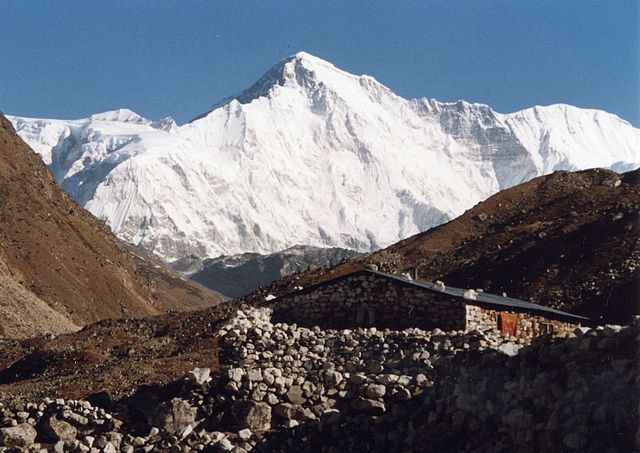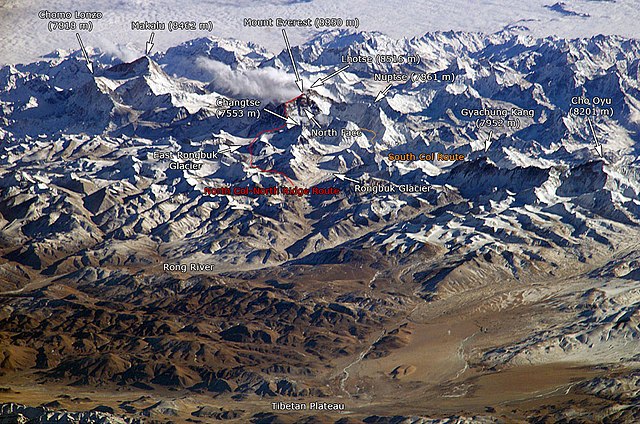Cho Oyu is the sixth-highest mountain in the world at 8,188 metres (26,864 ft) above sea level. Cho Oyu means "Turquoise Goddess" in Tibetan. The mountain is the westernmost major peak of the Khumbu sub-section of the Mahalangur Himalaya 20 km west of Mount Everest. The mountain stands on the China Tibet–Nepal Koshi Pradesh border.
The south side of Cho Oyu from Gokyo.
Viewing Cho Oyu via Tingri
Southern and northern climbing routes as seen from the International Space Station. (The names on the photo are links to corresponding pages.)
Ascent by a team from China University of Geosciences (Wuhan) on 2 October 2008
Nepal, officially the Federal Democratic Republic of Nepal, is a landlocked country in South Asia. It is mainly situated in the Himalayas, but also includes parts of the Indo-Gangetic Plain. It borders the Tibet Autonomous Region of China to the north, and India to the south, east, and west, while it is narrowly separated from Bangladesh by the Siliguri Corridor, and from Bhutan by the Indian state of Sikkim. Nepal has a diverse geography, including fertile plains, subalpine forested hills, and eight of the world's ten tallest mountains, including Mount Everest, the highest point on Earth. Kathmandu is the nation's capital and the largest city. Nepal is a multi-ethnic, multi-lingual, multi-religious and multi-cultural state, with Nepali as the official language.
"Nēpāla" in the late Brahmi script, in the Allahabad Pillar inscription of Samudragupta (350–375 CE).
This painting in a Laotian temple depicts a legend surrounding the birth of Gautama Buddha c. 563 BC in Lumbini, Western Nepal.
In the premises of the Changu Narayan Temple, is a stone inscription dated 464 AD, the first in Nepal since the Ashoka inscription of Lumbini (c. 250 BC).
Sinja Valley, thought to be the place of origin of the Khasas and the Nepali language, was at the heart of the Khas Malla empire.








